From The Headlight November - December 2014
Central Pacific 29
Truck Assembly Continues
By Mike Manson
Progress continues on rebuilding the trucks, although it may seem that nothing is happening. The replacement bolster beam is drilled for the king pin and the bolts used to mount the various steel parts. Several of the spring-plank hanger-carriers salvaged from B&O 20 are an inch too long, so Jeff Millerick shortened them at his workshop in Sebastopol. They will be installed at the next work session, along with the spring planks.
The bolster springs consist of triplet elliptical springs, which are three sets of upper and lower leaf springs connected at each end by a single bolt. Each spring supports an end of a bolster beam. They will be supported by the spring planks.
Jeff will send three of the four bolster springs out for sandblasting. The fourth spring will be replaced, because it contains fewer steel leaves than the others. The bolster would be lopsided within the truck frame if the weaker spring is used.
All technical terms are from the 1895 Car Builders Dictionary, which is available on the Internet.
As mentioned before, we are financing the creation of a pattern and the casting of the eight pedestals with our "Buy a Pound of Pedestal" campaign. Over $1800 has been raised so far - Thank you, donors! But we need still more donations to cast the pedestals. Your generous donation of $10 will cover the prorated cost of the patterns, steel, sales tax, energy and labor needed to cast one pound of a pedestal for CP 29 and bring it to the De Carli Trolley Museum. Please send a donation today so the Society can continue the restoration of CP 29.
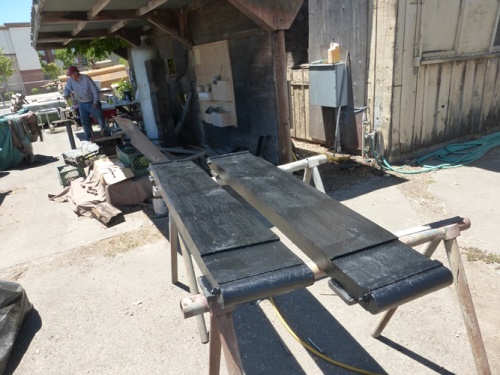
The planks are notched for the spring seats, painted, and ready for assembly and installation on the trucks. This and the next photo are by Steve Atnip; the rest are by the author.
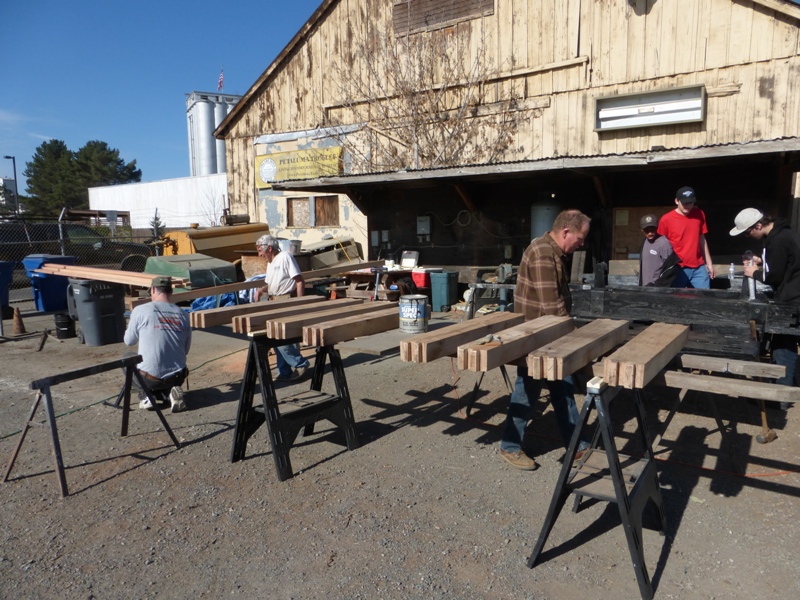
Photo 2: A spring-plank hanger-carrier (top) and spring-plank hangers support the spring plank. The plank will, in turn, support a bolster spring at each end. The bolster springs support the bolster.
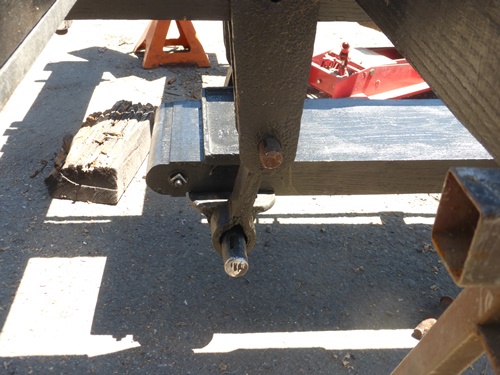
Each bolster spring consists of triplet elliptical springs from B&O 20 that will be sand blasted and painted black. Each of the bands shown here contains six steel plates.
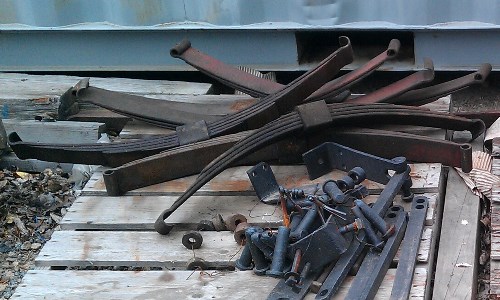
This disassembled triplet contains only five plates per band. It will have to be replaced to maintain the proper height of the truck.
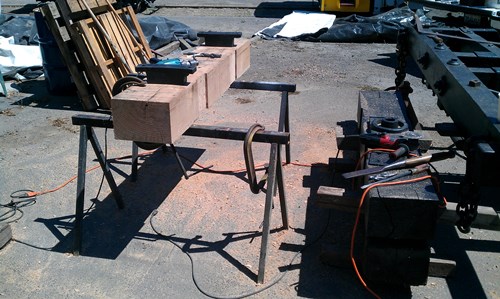
The new oak beam at left is the replacement truck bolster. At right is the other bolster for CP 29. When in service the broad side is horizontal. Each bolster will support one end of CP 29, transferring the 18,000 to 20,000 pounds of weight to the bolster springs beneath it.
From The Headlight January - February 2015
Central Pacific 29
Summary of This Year's Efforts
By Mike Manson
Although CP 29 is third in line for restoration work, much was accomplished on the truck frames this year. Each work session saw two to four team members working on the trucks.
In the fall of 2012 Channel Lumber furnished the four end beams, four wheel pieces, four transoms and eight safety beams. Each piece was sawn to the correct profile but slightly longer than the original. Last year we had the ends of each piece rough-shaped with a large band saw to match the original. Then the Restoration Team members began the final shaping using both electric and hand-powered tools: circular saw, hammer & chisel, framing slick and rasp.
The truck frames fit together using mortise and tenon joints. Each tenon was trimmed, shaped and beveled on its leading edges, and the corresponding mortise was enlarged and deepened as necessary to get a tight-fitting joint. The oak timbers are dense and tough so progress is slow.
When properly shaped the ten pieces of each frame slipped together quickly. A few good raps with a sledge hammer seated each tenon. Nuts, bolts and washers salvaged from B&O 20 and some new fasteners were used to lock the timbers together. Then the various pieces of truck hardware were mounted, including B&O 20's brake hangers and spring-plank hanger-carriers. The spring planks have been fitted into position. The truck bolsters are drilled for the king pin. All wood and metal pieces were painted black before assembly. When assembly is complete the trucks will receive another coat of paint.
Three of the four bolster springs have gone out for sandblasting. We are searching for a replacement for the fourth spring, because it contains fewer steel leaves than the others.
Jeff Millerick ordered eight, 4-inch-wide steel reinforcing plates to go on top of the trucks. They are of ½-inch-thick steel that is bent into a Z-shape. The commercial metal shop cut the plates and made a right-angle bend in each one. Jeff heated each piece and formed a second bend. By the time you read this article the locations for bolt holes will be marked on each plate. Then Jeff will use his shop's metal forming machine to punch the holes. The vendor charged us $15 per plate, but Jeff is donating his labor. At the next work session in January each plate will be bolted on top of a wheel piece-and-transom joint, resulting in a much stronger joint that is better able to support the car body.
Please remember to make a donation to our "Buy a Pound of Pedestal" campaign. Over $1800 has been raised so far - Thank you, donors! But more donations are needed to pay for casting the pedestals. Each donation of $10 will cover the prorated cost of the patterns, steel, sales tax, energy and labor needed to cast one pound of a pedestal for CP 29 and bring it to the De Carli Trolley Museum. Please send a donation today so the Society can continue the restoration of CP 29.
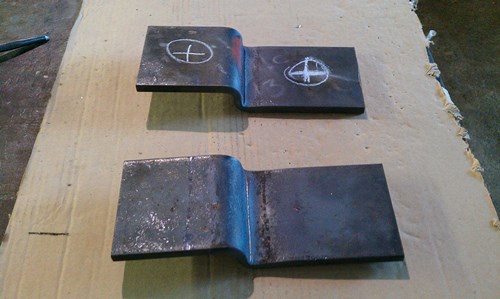 />
/>
Photo 1: Eight Z-shaped steel reinforcement plates have been made for the trucks. These half-inch-thick plates will sit on top of the wheel piece-to-transom joints. Each plate will have two bolt holes.
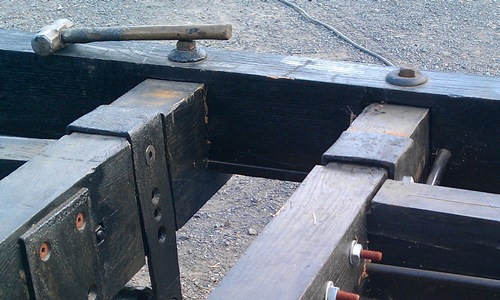 />
/>
Photo 2: Each of the Z-shaped steel reinforcing plates will replace a cast washer as shown in the photo above and will be bolted on top of the wheel piece of the truck. The plate will extend down onto the transom where they will be through-bolted. The reinforced joint will be much stronger, and better able to support the combined weight of bolster beam, springs and car body.
From The Headlight March - April 2015
Central Pacific 29
Interior Repairs Are Planned for 2015
By Mike Manson
The 2015 Work Season began on January 24. Jeff Millerick and Richard Fries installed the 8 Z-shaped steel reinforcing plates described in the previous issue of The Headlight. The next session was cancelled on account of rain.
Work on the two new trucks has reached a point where no more can be done until the new pedestals are cast and received at the De Carli Trolley Museum yard in Petaluma. So, this year our focus will be on the interior of the car: stripping paint and removing damaged boards. Our ultimate goal is to bring CP 29 back to its appearance when it came to the NWP.
CP 29 was purchased by the NWP in June 1912 along with five other coaches. According to company records the first four cars in the group, including CP 29 (renumbered to NWP 123), were immediately sent by ship to the railroad's Northern Division. Until recently we were not certain how the car looked in 1912.
When CP 29 was overhauled by the Central Pacific it received bull-nose roof ends to replace the original duck-bill roof ends. The new design improved the ventilation inside the car. It also eliminated the need for windows in the end walls on either side of the door. Eliminating the end windows eliminated the potential for a passenger to fall against glass while on the car platform.
The original board and batten siding was replaced with tongue-and-groove boards by the CP shop crew. As shown in a drawing obtained from the California State Railroad Museum CP 29 was supposed to have received new interior paneling between the windows. The wood specified in the drawing was walnut, much higher in quality than the T&G boards it currently sports. And the end wall windows were to be covered over with walnut boards too, instead of the T&G boards.
A new book on the NWP's Northern Division was released in 2013. The book, Images of Rail: Northwestern Pacific Railroad - Eureka to Willits, by O'Hare, Service, and the Fortuna Depot Museum, includes a photograph on page 32 of a steam ship at Fields Landing. Two locomotives, their tenders, and four wooden passenger coaches are clearly visible on the ship's deck.
Although the cars are at a distance one end of each car is clearly visible. Each car has a bull-nose roof end like CP 29. The door windows are visible, but there are no windows visible in the end walls of the cars. If there was a need to protect end wall windows during the sea voyage, the door windows would have been protected too.
Now that we know CP 29 did not have end windows, we can proceed with stripping the paint on the interior walls and repair or replace damaged boards.
We still need donations for the pedestals. Please remember to make a donation to our "Buy a Pound of Pedestal" campaign. Each donation of $10 will cover the prorated cost of the patterns, steel, sales tax, energy and labor needed to cast one pound of a pedestal for CP 29 and bring it to the De Carli Trolley Museum. Please send a donation today.
1- California State Railroad Museum, Southern Pacific Collection, 1890's, Series 1, MOLDINGS 77.
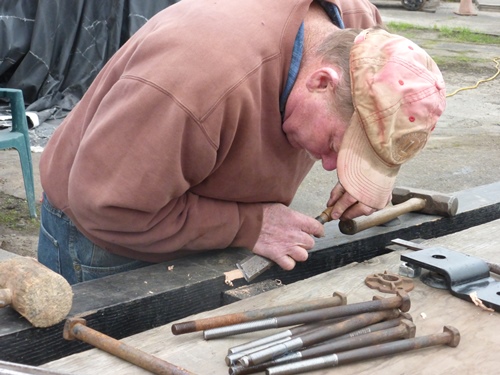
Photo 1: Jeff Millerick chisels a space on one truck's wheel piece to accommodate the Z-shaped steel plate at the right. The first three photos are by Steve Atnip, while the last three are by the author.
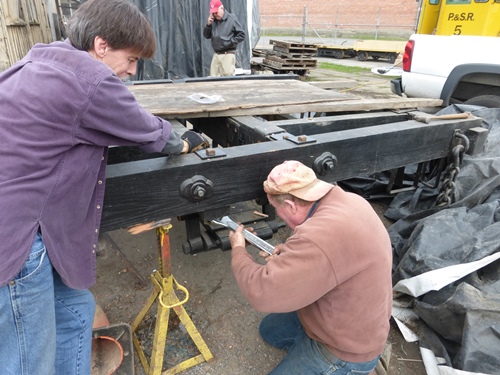
Photo 2: Richard Fries and Jeff Millerick tighten a bolt for one of the Z-plates.
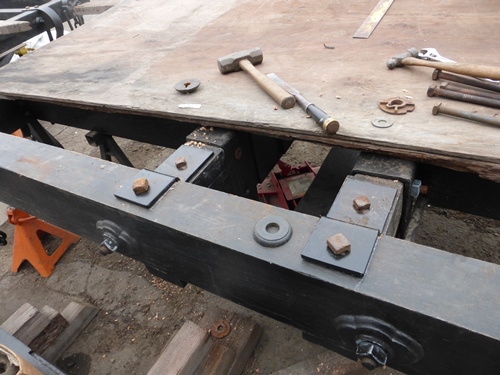
Photo 3: Richard Fries and Jeff Millerick tighten a bolt for one of the Z-plates.
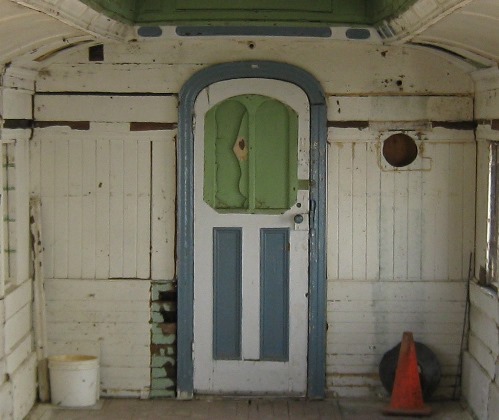
Photo 4: This photo of the South end of CP 29 shows the boards cut open for a stove chimney. These will be removed this year, along with the wainscot boards that don't match the rest of the car. The door is original to the car, but it needs refinishing, new glass and a latch set.
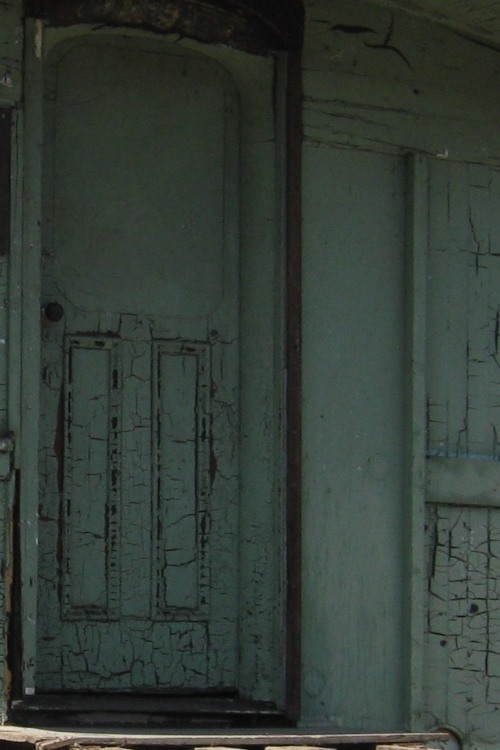
Photo 5: The other side of the end wall needs repairs too.
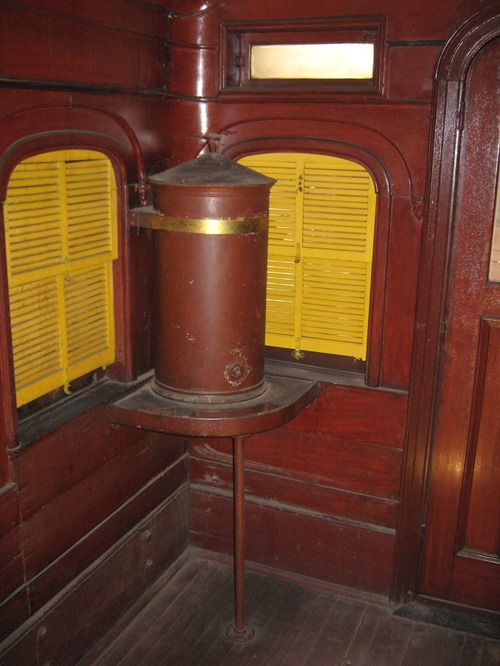
Photo 6: How CP 29 used to look: B&O 21, which was built by Wason in 1868, still has its original interior paneling, windows and louvered blinds. No paint on the interior walls, just varnish.
From The Headlight May - June 2015
Central Pacific 29
Triplex Springs and Air Brake Parts are Cleaned and Painted
By Mike Manson
This spring the three usable triplex leaf spring sets were sand blasted, painted and reassembled, then installed on the trucks. One of the trucks is now completely fitted with the leaf springs, so the truck bolster beam was set onto the springs. The other truck will have to wait until a fourth set of springs of the proper height can be obtained. Both trucks need pedestals before assembly can be completed.
When CP 29 was built in the spring of 1869 it had only hand-powered brakes. George Westinghouse received a patent for his compressed-air-powered brake system at the same time the car was under construction. His new company, the Westinghouse Air Brake Company (WABCO), eventually supplied brake systems for nearly all railroad locomotives and cars in North America. Both CP 29 and B&O 20 received their brake system at some point in the 1870's.
The WABCO Quick-action automatic brake system salvaged from B&O 20 includes the following components: a brake cylinder, 10 inches in diameter and 14" in length with a stroke of 8"; auxiliary air reservoir; triple valve; brake-pipe air strainer; air-brake safety valve; and self-locking angle cocks, with hoses and couplings. These components are connected by 1¼" steel pipe. We did not get a conductor's valve; that item stayed in Baltimore with the interior fittings.
The triple valve is attached to one end of the brake cylinder. It has three functions: first, pressurize the auxiliary reservoir; second, apply the brakes; third, release the brakes. 1
We cleaned and pressure-tested the angle cocks and other valves. They are all in good condition. The air strainer has been disassembled and cleaned. Its plain steel mesh screen has been replaced with one of stainless steel. The air reservoir remains to be cleaned and tested. The triple valve must be sent in to WABCO for an overhaul. The steel pipe and the brake hoses will be replaced with new components when the system is installed beneath CP 29.
CP 29 needs a conductor's valve and pressure gauge. If you can donate these items, please contact the author at mike_mnsn@yahoo.com.
Unfortunately, the Union Pacific Foundation turned down our request for funding the pedestals, so we must raise all the money ourselves. Please donate to our "Buy a Pound of Pedestal" campaign. Each donation of $10 will cover the prorated cost of the patterns, steel, sales tax, energy and labor needed to cast one pound of a pedestal for CP 29 and bring it to the De Carli Trolley Museum. Please send your donation today.
1 International Correspondence Schools, 1913, The Westinghouse Air-Brake Handbook, 1st Edition: International Textbook Company, Scranton, PA, p. 155.
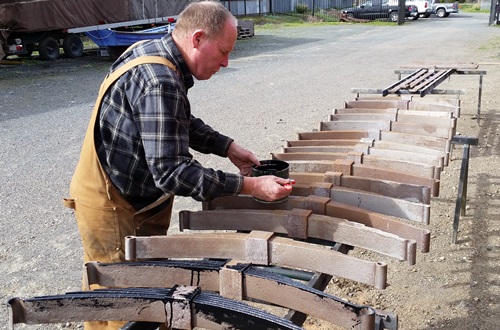
Photo 1: Fresh from the sand blasters shop, 18 leaf spring sets are getting a coat of black paint by Jeff Millerick. Photo by the author.
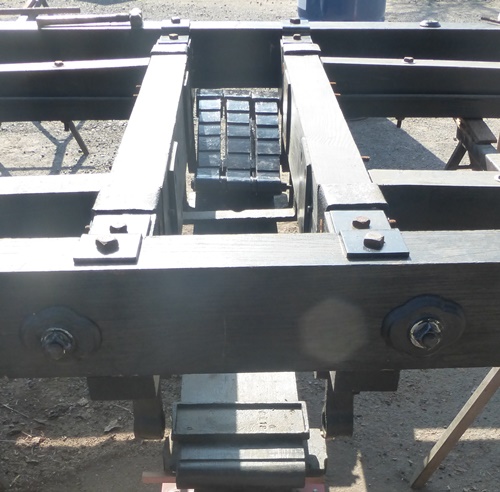
Photo 2: The first set of triplex springs is installed on the spring plank. Another set will be positioned on the cast iron plate in the foreground. Photo by Steve Atnip.
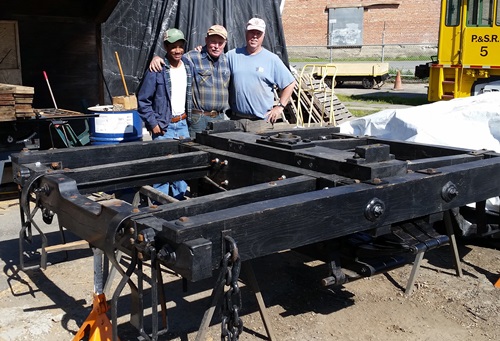
Photo 3: Jelani, Jeff and Steve Atnip proudly show off one of the trucks with its triplex springs and bolster beam installed. One end of CP 29 will be supported by the center plate on the beam. Photo by the author.
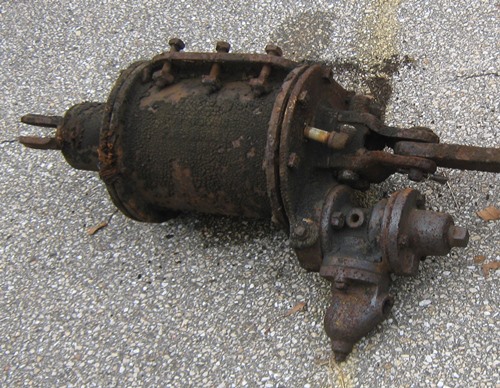
Photo 4: B&O 20's Westinghouse Air Brake cylinder and triple valve are seen here in Baltimore during salvage operation in January 2012. The long bolts at the top of the cylinder held it against a 2"x12" board that was bolted to the underside of the car's floor sills. Photo by the author.
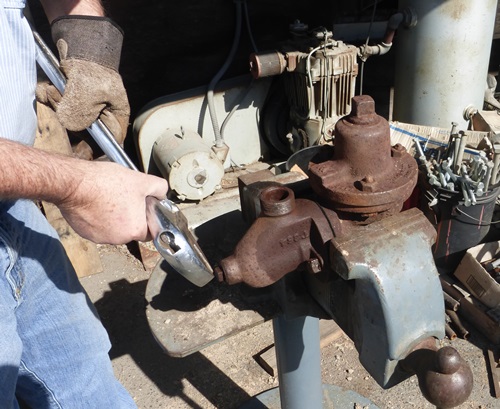
Photo 5: This triple valve purchased several years ago from the Timber Heritage Association is being disassembled to supply a part for the valve from B&O 20. Note the 2" diameter pipe thread to the right of the wrench; those threads were broken off of #20's casting. Photo by Steve Atnip.
Direct Webpage comments and suggestions to NWPRRHS Webmaster
This page was created on March 20, 2019
and last updated on March 20, 2019

